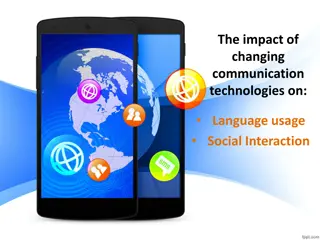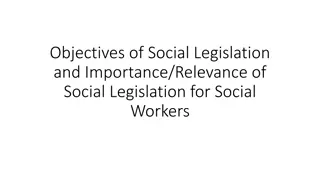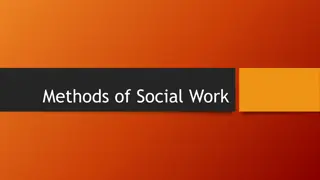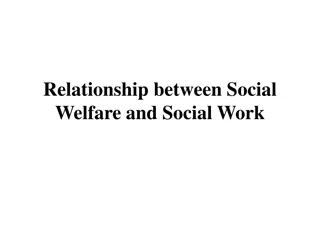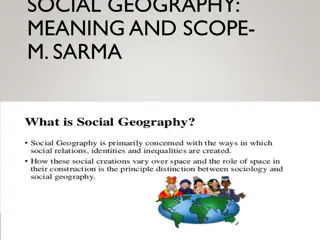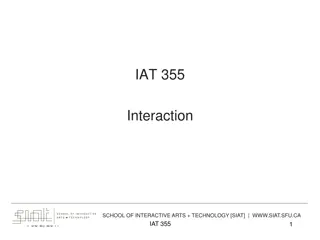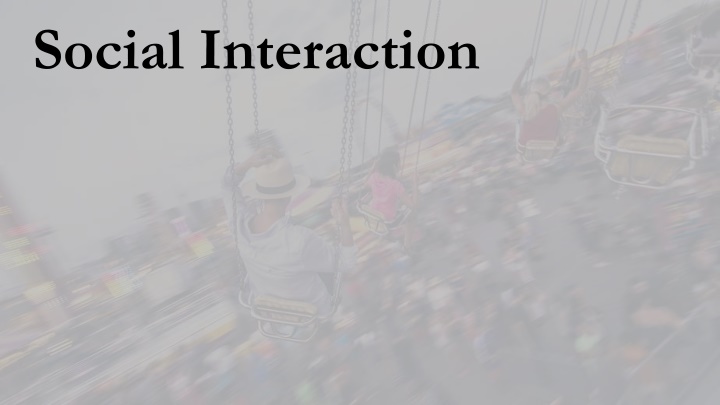
Self-Presentation Theories and Strategies
Explore the dynamics of social interaction and self-verification theory in how individuals want to be perceived by others. Dive into self-presentation strategies like ingratiation, self-promotion, and cultural differences in exemplification and supplication. Discover the role of self-esteem and self-monitoring in shaping our interactions with different people. Watch a short clip on self-presentation to learn more.
Download Presentation

Please find below an Image/Link to download the presentation.
The content on the website is provided AS IS for your information and personal use only. It may not be sold, licensed, or shared on other websites without obtaining consent from the author. If you encounter any issues during the download, it is possible that the publisher has removed the file from their server.
You are allowed to download the files provided on this website for personal or commercial use, subject to the condition that they are used lawfully. All files are the property of their respective owners.
The content on the website is provided AS IS for your information and personal use only. It may not be sold, licensed, or shared on other websites without obtaining consent from the author.
E N D
Presentation Transcript
How do we want to be seen by others? Self-Verification Theory: People want to be seen positively (as having great qualities) But people also want to be seen accurately (as they see themselves) Which is more important enhancement or verification?
Self-Verification Theory Does self-esteem matter? High self-esteem: positive and accurate feedback are the same Low self-esteem: positive and accurate feedback are in conflict Then resist positive feedback over time and seem to prefer negative ( accurate ) feedback (slower cognitive response) Low self-esteem people respond to positive feedback initially (immediate affective response)
Self-Presentation What types of images do people portray? Ingratiation Self-Promotion Intimidation I am likeable I am competent I am powerful Tactics: compliments, favors, smiles, attentiveness Tactics: brag about accomplishments & skills Tactics: make threats and displays of dominance Risks: being perceived as phony Risks: being perceived as conceited & boastful Risks: being perceived as a bully
Self-Presentation Cultural Differences Exemplification Supplication I am worthy I am weak Individualistic: looking strong and independent Tactics: claims of moral superiority, self-denial, suffering Tactics: offer submission, plead, self- depricate Collectivistic: Looking modest and fitting in with the groupf Risks: being perceived as self-righteous Risks: being perceived as overly needy
For a short clip on Self-Presentation CLICK HERE
Self-Monitoring When do people want to be seen as they see themselves and when do people engage in self-presentation? Depends on Individual levels of monitoring: High Monitors: Adjust to situations pragmatic orientation Low Monitors: Express dispositions regardless of situation; principle orientation The type of relationship: Close friends and partners: Self- Verification New acquaintances and transactions: Self-Presentation
Self-Monitoring Scale Decide whether each statement is true or false as it pertains to you: I find it hard to imitate the behavior of other people. I guess I put on a show to impress or entertain people. I can only argue for ideas that I already believe. When I am uncertain how to act in a social situation, I look to the behavior of others for cues. I have trouble changing my behavior to suit different people and different situations. I may deceive people by being friendly when I really dislike them.
Non-Verbal Behavior Communicates more information than verbal behavior Eye contact, facial expressions, physical proximity, speech rate, tone of voice Nonverbal signals are universal across cultures and similar across species
Communication types serve different purposes: Verbal: communicate information about external events Nonverbal: establish and maintain the relationship between people Convey affect Managing self-presentation
For a short clip on non-verbal communication CLICK HERE
The Chameleon Effect People unconsciously mimic the behavior of others Facial expressions, mannerisms, gestures, posture Occurs in 30% of ordinary social interactions
Why do we mimic? Social glue : Promotes bonding Fosters understanding and perceived similarity Rapport between teachers and students Creates liking
Chartrand & Bargh, 1999 Behavioral Mimicry 0.8 Instances per Minute Participants worked on a simple task with an accomplice who either continuously rubbed her face or shook her foot 0.7 0.6 0.5 0.4 0.3 0.2 0.1 0 Confederate Rubs Face Confederate Shakes Foot Confederate Behavior Instances per Minute Participant Rubs Face Instances per Minute Participant Shakes Foot
When is mimicking inappropriate? Sometimes mimicry can promote awkwardness rather than bonding Formal vs. informal relationship Affiliation setting vs. business-like setting Formal Settings: Business meetings Classrooms The workplace Informal Settings: Home With a close other A night out
Leander, Chartrand, & Bargh (2012) Participants were asked to describe a series of photographs Female experimenter interacted either in an informal manner (e.g., awesome instead of good ) or in a business-like manner (focusing only on the task) Female experimenter either mimicked or did not mimic participants posture, gestures, and nonverbal mannerisms Participants described how they felt Did participants feel warm or did they experience the chills ?
Relational-Dependent Mimicry 4.5 4 3.5 Felt Coldness 3 2.5 2 1.5 1 0.5 0 Mimicry No Mimicry Affiliative Experimentor Felt Coldness Task-Oriented Experimentor

![textbook$ Wallbanger (The Cocktail Series Book 1) [KINDLE EBOOK EPUB]](/thumb/9895/textbook-wallbanger-the-cocktail-series-book-1-kindle-ebook-epub.jpg)



